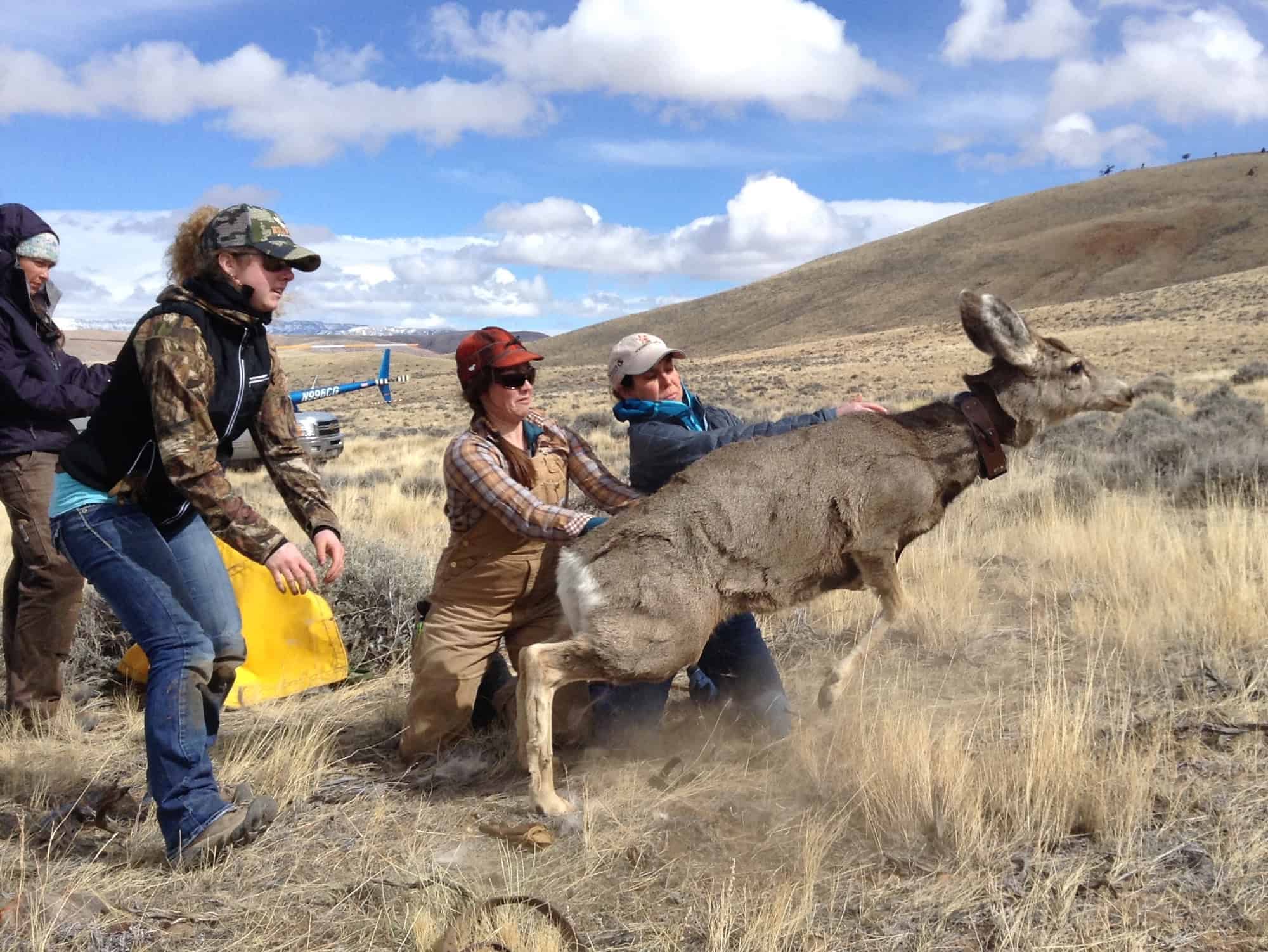Share this article
JWM: Salmon poisoning disease could affect relocated grizzlies
Grizzly bears (Ursus arctos horribilis) relocated to Washington’s North Cascades from areas without salmon (Oncorhynchus sp.) may be sensitive to salmon poisoning disease, according to new research. Biologists say the findings could affect grizzly bear management in the region.
“The North Cascades differs from the other grizzly bear recovery areas in having spawning salmon,” said TWS member Charles Robbins, a wildlife biology professor at Washington State University and lead author of the study published in The Journal of Wildlife Management.
Those salmon can carry a parasite that harbors a bacteria that can sicken animals that don’t have a history of previous exposure. Salmon poisoning disease is caused when the parasite emerges from a snail and infects salmon or trout, Robbins said. Once a bear consumes the infected salmon, the parasite cyst hatches, implants in the gastrointestinal tract and releases a bacteria that sickens the host.
Zoos in the Northwest have reported incidents of the disease in captive bears, Robbins said, but grizzlies had never been studied. “So, it was natural for us to ask if SPD could affect grizzly bears once they’re released in the North Cascades,” he said.
In the study, Robbins and his colleagues collected wild salmon from the east and west side of the North Cascades and fed them in limited amounts to captive grizzly bears from Yellowstone, northwest Montana and British Columbia. They observed the bears twice daily for signs of sickness from the disease, including fever, lethargy, vomiting, diarrhea and decreased appetite. “Eight of the 11 bears displayed such symptoms in as little as seven days after consuming salmon,” Robbins said.
The researchers treated the bears immediately, which then fully recovered, so researchers don’t know if the disease would have been fatal.
Robbins and his colleagues determined that grizzly bears are resistant to the bacterial form of salmon poisoning disease that occurred historically. But a newer form introduced from Asia in the 1970s causes more trouble. The team found that grizzly bears in areas without previous exposure to infected salmon are susceptible to this newer form of bacteria.
Robbins said these findings might influence grizzly bear management. As recovery occurs and bears move into areas where salmon are more available, issues with salmon poisoning disease may arise.
“Management agencies will need to monitor these bears closely to see what impact SPD will have,” he said. Robbins added the disease could potentially prevent or delay the bears’ recovery.
“It would be virtually impossible to treat sick bears because it requires giving antibiotic pills twice daily for 10 days,” he said. “Because a wide range of management agencies are attempting to recover wild salmon populations throughout the Pacific Northwest, other grizzly bear populations that don’t currently consume salmon may ultimately be affected.”
Robbins and his colleagues plan to study the distribution of infected salmon and kokanee (Oncorhynchus nerka) in the North Cascades and to develop an antibody test to determine if bears have had SPD.
“Restoration of grizzlies in the North Cascades will provide the opportunity to determine the ecological impact of the disease,” he said.
TWS members can log in to Your Membership to read this paper in the Journal of Wildlife Management. Go to Publications and then Journal of Wildlife Management.
Header Image: A grizzly bear catches salmon. Grizzlies relocated to the North Cascades may be susceptible to salmon poisoning disease. ©Don Montemorra








